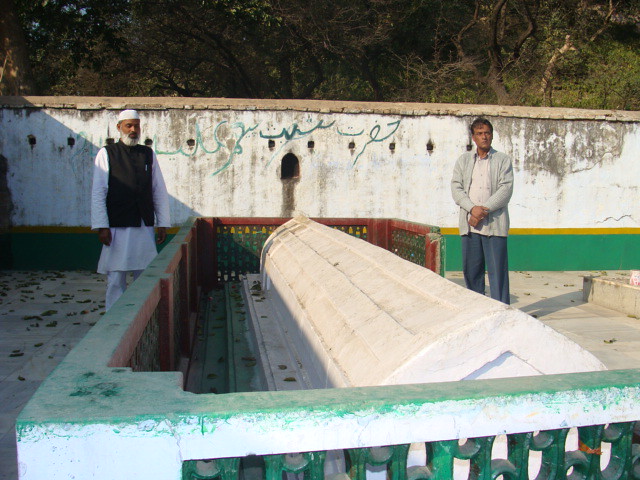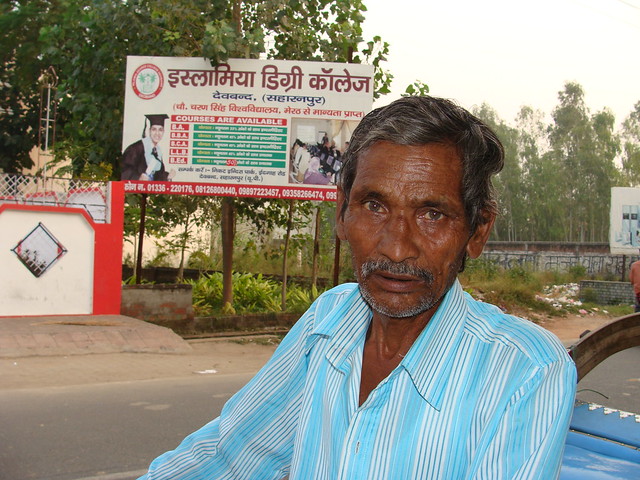By Kashif-ul-Huda, TwoCircles.net
Liberhan Commission investigating destruction of Babri Masjid was given 48 extensions before it submitted its final report after a delay of 17 years. Allahabad High Court directive to maintain status quo on Babri Masjid site after its judgment in the title suit has already been given one extension and its second deadline is February 15th of this year. It is safe to assume that it will be given extensions for many years to come. By delaying action or resolution we are making the problem bigger and even more difficult to resolve.
Recently, I was part of a panel on BBC Radio’s Beyond Belief program to discuss Ayodhya dispute, importance of Babri Masjid, and implication of the Ayodhya verdict by the High Court. With me on the panel were Dr. Raj Sharma, a Hindu priest based in UK and Dr John Zavos, Lecturer in South Asian Studies at the University of Manchester.
Click here to listen to the program: http://www.bbc.co.uk/programmes/b00xpnd4
Ayodhya is important to Muslims as it is claimed that Prophet Sheesh and Noah are buried here. It is also referred to as “khurd Makkah” or “small Makkah” showing the importance that Muslims attached to this place. More than 80 Sufi shrines and hundreds of mosques can be found scattered all over this region. Muslims inhabited this place at least three-hundred years before Babar even thought of invading India.
Ayodhya has been an important city for many different groups and there are many inscriptions found all over India that points to its importance to Jains, Buddhists, Shaivaites, and Vaishnavites. But even archeologist like BB Lal, a favorite of Hindutva groups, acknowledge that first occupation of Ayodhya area can be dated as early as seventh century BC clearly putting it much later than Treta Yuga (7000BC) , which Hindus believe to be the age when Lord Ram appeared.

12-foot long grave in Ayodhya, believed to be of Prophet Sheesh. [TCN Photo]
All the inscriptions found in or about Ayodhya have failed to mention anything about Ayodhya being the birth place of Ram. All references to Ram birthplace appears to be sixteenth century or later therefore this myth was propogated after Babri Masjid was already constructed. Tulsidas, who wrote his epic poem Ramcharitmanas in 1570s failed to mention anything about Babri Masjid being the birthplace of subject of his poem. In fact, Tulsidas when he was harassed by the Brahmins he said in a couplet, “do what you like to me, I will beg for my food and I will sleep in the Mosque.” Famous human rights activist Harsh Mander told me once that since Tulsidas spent lot of time in Ayodhya, it is possible that he slept in Babri Masjid.
Archeological Survey of India (ASI) was ordered by the High Court to dig to unearth evidence of any temple underneath Babri Masjid. ASI recorded finding bones of large and medium-sized animals and glazed wares, tell-tale signs of Muslim presence in the area. Evidence of a structure was found but not big enough to suggest a grand temple but something that could be Buddhist structure or even a qanati masjid (roof-less mosque). However, there was no evidence to suggest any structure was destroyed to construct Babri Masjid.
When Justice Agarwal wrote his judgement keeping in view “the belief, faith, and traditions of Hindus,” he was in fact giving in to the propaganda that is not consistent with historical evidence and if he had to respect the belief then why limit himself to only belief of the Hindus?

Abdul Qayyum, a rickshaw puller in Saharanpur lost his son in post-Babri violence. [TCN Photo]
Destruction of Babri Masjid on December 6th, 1992 was not only an attack on the masjid but also an attack on the idea of India. An attack on the status of Muslims as equal citizens of India, attack on India’s Islamic past, attack on present secular India, attack on constitution and rule of law, attack on future of plural and diverse India. It was also an attack on thousand years of Hindu traditions. It was a crime against India and humanity for which no one has been punished.
Allahabad High Court’s September 2010 judgement divided the 2.77 acre land where Babri Masjid once stood among three parties ( 2 Hindus, and 1 Muslim party) but 67 acres around the site is acquired by the government meaning that it is also going to be a party to any future solution.
All breathed a sigh a relief when no violence was reported after the Ayodhya verdict. Then quickly Ayodhya slipped out of our minds which show that India is ready to forget and move on. But we have not moved on, this status quo needs a resolution. The longer we delay it, bigger the price that future India has to pay and who knows if the future generation will be any closer to a solution?
Link:
Ayodhya: A TCN series by Mumtaz Alam Falahi.

